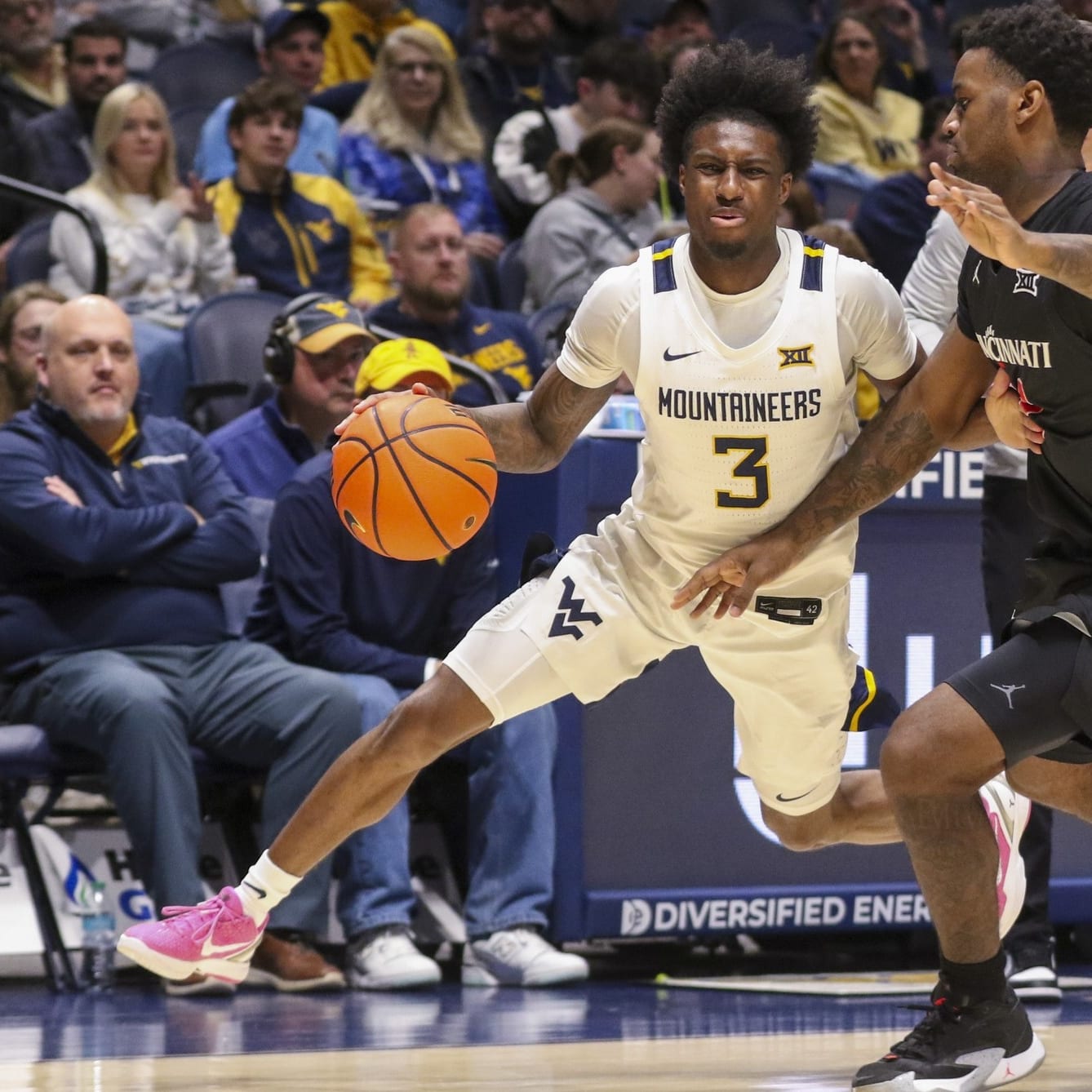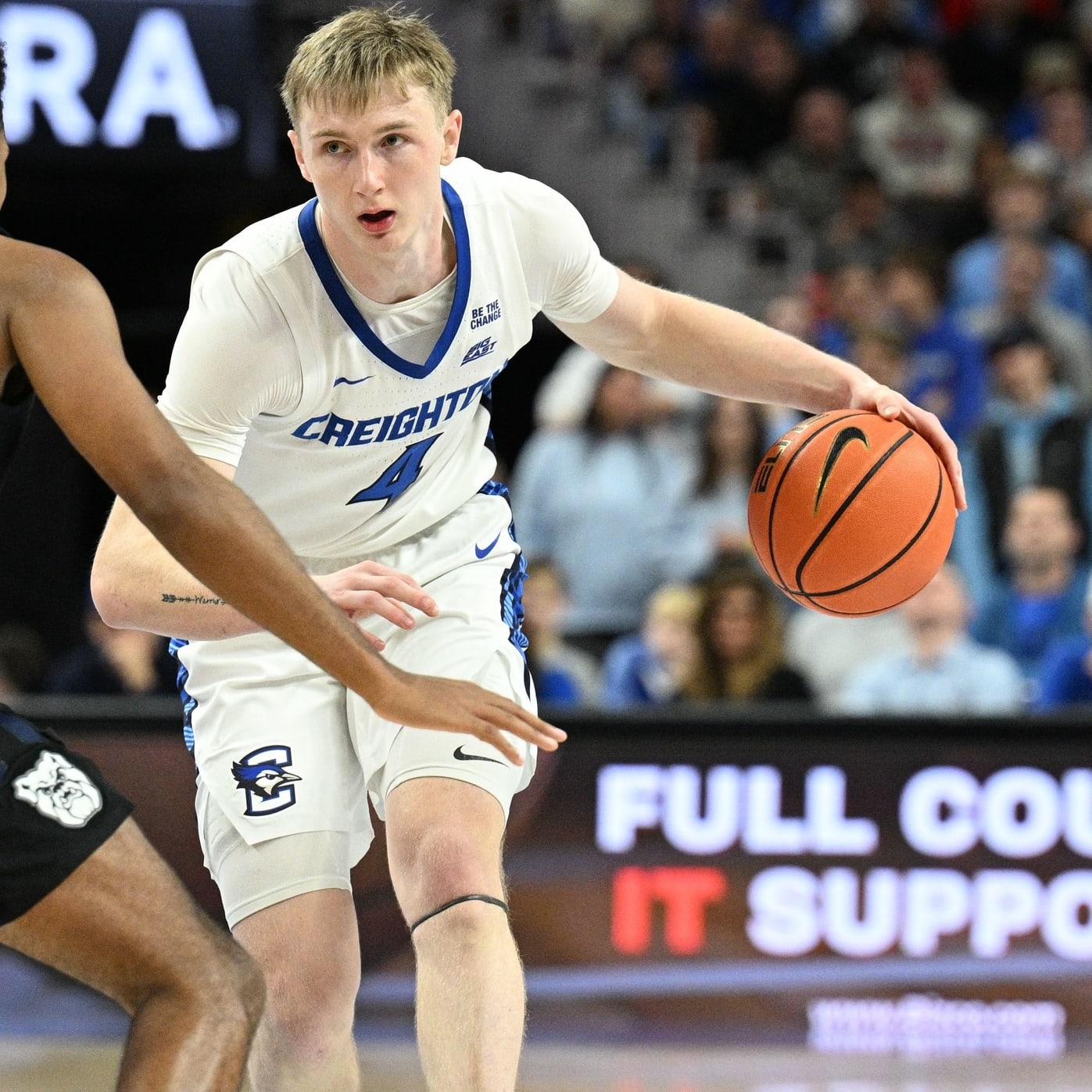What's the best part of writing about college basketball? March Madness. What's the worst part of writing about college basketball? Predicting March Madness. Everyone wants advice in March. "You watch all year, you must have some incredible insights!" The truth is, I don't always even win the bracket pool among my neighbors or law school friends. Let's be honest; your boss who couldn't name one player on Gonzaga or pick Oscar Tshiebwe out of a lineup has a better shot at winning.
That's what the Madness brings; you're bombarded with statistics, formulas, diagrams, depth charts and "gut feelings". And, after all that time spent crunching numbers and doing research, your spouse who picked the games by color ends up with a better bracket than you. Or your four-year-old son picks UMBC to beat Virginia. Yes, that actually happened.
But fear not, my friends. There is hope for us yet. All hail, "The NCAA Tournament Gospel". The following five rules have been passed down from generation to generation. These tenets have been collected over the years, reprised, tweaked and edited. They highlight my strategies and theories on picking a successful bracket. I don't always pick the Final Four correctly, but when I do, these are my guidelines. Behold, the Commandments of Madness.
1. Do not pick all four No. 1 seeds in the Final Four. First of all, what's the fun in that? Secondly, the only year since seeding began in 1979 that four No. 1 seeds made the Final Four
What's the best part of writing about college basketball? March Madness. What's the worst part of writing about college basketball? Predicting March Madness. Everyone wants advice in March. "You watch all year, you must have some incredible insights!" The truth is, I don't always even win the bracket pool among my neighbors or law school friends. Let's be honest; your boss who couldn't name one player on Gonzaga or pick Oscar Tshiebwe out of a lineup has a better shot at winning.
That's what the Madness brings; you're bombarded with statistics, formulas, diagrams, depth charts and "gut feelings". And, after all that time spent crunching numbers and doing research, your spouse who picked the games by color ends up with a better bracket than you. Or your four-year-old son picks UMBC to beat Virginia. Yes, that actually happened.
But fear not, my friends. There is hope for us yet. All hail, "The NCAA Tournament Gospel". The following five rules have been passed down from generation to generation. These tenets have been collected over the years, reprised, tweaked and edited. They highlight my strategies and theories on picking a successful bracket. I don't always pick the Final Four correctly, but when I do, these are my guidelines. Behold, the Commandments of Madness.
1. Do not pick all four No. 1 seeds in the Final Four. First of all, what's the fun in that? Secondly, the only year since seeding began in 1979 that four No. 1 seeds made the Final Four was 2008. In fact, three No. 1 seeds have made it just four times in the same year in the modern era. Last year, just two of the four No. 1 seeds made the Final Four.
2. If you don't like a high-seeded squad, pick it to go out as soon as reasonably possible. So, if you don't believe in, say, Duke, pick the Blue Devils to lose once they get past the No. 15 seed. You'll be the only one who picks that game correctly, and even if it's an incorrect selection, you wouldn't have had Duke going that far anyway.
3. There are no bragging rights for picking a No. 10 over a No. 7 seed, or a No. 9 over a No. 8 seed. These are not upsets. All those teams are basically even. Take bigger risks! Even the 11-6 matchup is starting to not feel like an upset anymore. And forget about 12-5, which will be explored in the next rule.
4. While we're on the subject of upsets, pick at least one 12-5 trap game. Maybe two. Or perhaps I could interest you in three? In 2019, No. 12 seeds defeated No. 5 seeds thrice. The No. 12 seed wins about 35 percent of the time versus the No. 5 seed; in other words, at least one No. 12 seed should triumph in 2022. The gap between conferences appears to be shrinking. Soon you're going to need to pick that Cinderella darling seeded 13 or lower to truly be able to pat yourself on the back for an upset.
5. Pick at least one seed lower than a 10 to make the Sweet 16. In 2021, not only did UCLA make the Sweet 16 as a No. 11 seed, but the Bruins made the Final Four. Besides, I'd rather pick the games by which mascot would win in a fight than pick all favorites.
Now that you're primed to fill out that winning bracket, let's take a more in-depth look at the regions.
MIDWEST REGION
Can we agree to name changes for the regions? Honor some great players or coaches and rename them. Because geography just does not work anymore. Take the No. 10 seed Miami Hurricanes. A school in one of the southernmost parts of the country, sitting along the East Coast, will be playing in the Midwest region, against a California school (USC) in a game played in Greenville, South Carolina. How does any of this make geographical sense?
Speaking of the 'Canes, Miami is a dark horse to make the Sweet 16 in this region. Stellar guard play dominates the tournament, and the Hurricanes have a dynamite trio of Kameron McGusty, Isaiah Wong and Charlie Moore. That second round matchup with Auburn could be dangerous for the Tigers.
Who doesn't love an upset? There are three very dangerous squads ranked No. 12 or lower. The classic 12-5 trap-game features a hungry Richmond squad against an Iowa team that will be a chic pick to make the Final Four after a rousing Big Ten Tournament title run. No. 13 South Dakota State gets a Providence team that many feel is over-seeded. No. 14 Colgate is one of the best three-point shooting teams in the country. The Raiders may not have an answer for Johnny Davis, but they should certainly be able to keep pace with the Badgers on offense.
SOUTH REGION
This region is Arizona, and then everyone else. The Wildcats have a super-sized frontcourt, a dangerous, unselfish, free-flowing offense and scoring for days. Add in a fairly weak No. 2 seed in Villanova, and a No. 4 seed with the potential to be upset in the first round, and the Wildcats could cruise to the Final Four.
As alluded to above, Illinois should be on upset alert against No. 13 Chattanooga. The Mocs have an outstanding guard in the form of Malachi Smith, and a matchup between Kofi Cockburn and Silvio De Sousa should make for great theater. De Sousa was once a highly touted recruit for Kansas and could give the 7-1 Cockburn a legitimate test in the post.
Michigan will be a chic "upset" pick as a No. 11 seed over Colorado State, but I like the Rams to not only take care of business but also upset Tennessee in the second round and advance to the Sweet 16.
And let's not forget about Loyola Chicago, as the Ramblers are dancing once again and should have the Villanova Wildcats shaking in their boots looking at that second round clash.
WEST REGION
The West region feels like it was set up to honor Coach K in his last NCAA Tournament run with the Blue Devils. He could face fellow legend Tom Izzo and Michigan State in the second round, then ultimately clash with Mark Few and Gonzaga in the Elite Eight. Duke beat Gonzaga earlier this season. If a No. 3 seed can be considered a darkhorse, watch out for Texas Tech. The Red Raiders will almost certainly be overlooked in a region shared by juggernauts Duke and Gonzaga.
The 'Zags have been the National Runner-Up twice in the last four tournaments; is this the team that finally gets them over the hump? A rematch in the Sweet 16 with Arkansas is intriguing, as the Razorbacks also downed the Bulldogs already this season.
There's plenty of noise around New Mexico State in the 12-5 trap game against UConn. Plus, the Aggies have a member of the All-Name Team in Sir'Jabari Rice.
EAST REGION
How is Virginia Tech the No. 11 seed in the East after shredding the competition in the ACC Tournament? That's because the ACC had a down year, and the committee killed the conference in the seedings. Other than Duke, the highest ranked ACC school is No. 8 North Carolina, who also happens to reside in the East. Armando Bacot is a bad matchup for Baylor in the second round.
I like whoever plays Saint Mary's to beat Saint Mary's and am upset that Murray State and the Dons of San Francisco have to play each other. I'm even more upset that the winner of that game is probably going to lose to Kentucky. In any other region, I'd have the Racers or the Dons to the Sweet 16. But alas, you can't have everything in life.
UCLA at No. 4 will be a popular pick outside the top three seeds in this conference, as the Bruins were considered an elite team earlier in the year before succumbing to the injury bug.
FINAL FOUR
Arizona appears to have the easiest path to the Final Four out of the South. Baylor is going to have a difficult time repeating after losing so much from their championship squad a season ago. The job that coach Scott Drew has done should be lauded; that being said, getting back to the Final Four for a second-consecutive season is going to be hard. Kentucky looks to have a fairly favorable draw on the bottom side of their region.
As far as the Midwest, this is the least amount a Kansas squad has been talked about in recent memory. The Midwest looks to be the region primed for the most chaos and turmoil. I'll go with an outside the box choice of Wisconsin there. And who isn't craving a deep Duke run culminating in that matchup with Gonzaga in the Elite Eight of the East? Let's get the 'Zags to steamroll the Dukies in Coach K's swan song.
I like Gonzaga and Arizona in the Final, with Arizona cutting down the nets for the first time since Miles Simon roamed the hardwood in 1997. I know, I know. No. 1 versus No. 1 in the National Championship game is bland. But stats are stats. 64 percent of the champions all-time have been No. 1 seeds. A No. 1 seed has won five of the last six tournaments. Even if you wanted to get "crazy", 30 of the last 32 national champions were 1, 2, or 3 seeds (UConn with Shabazz Napier as a No. 7 seed in 2014 is the only real outlier).
So, the moral of the story? Pick upsets early on. Stick with the favorites at the end. Good luck, and may the brackets be ever in your favor.





































